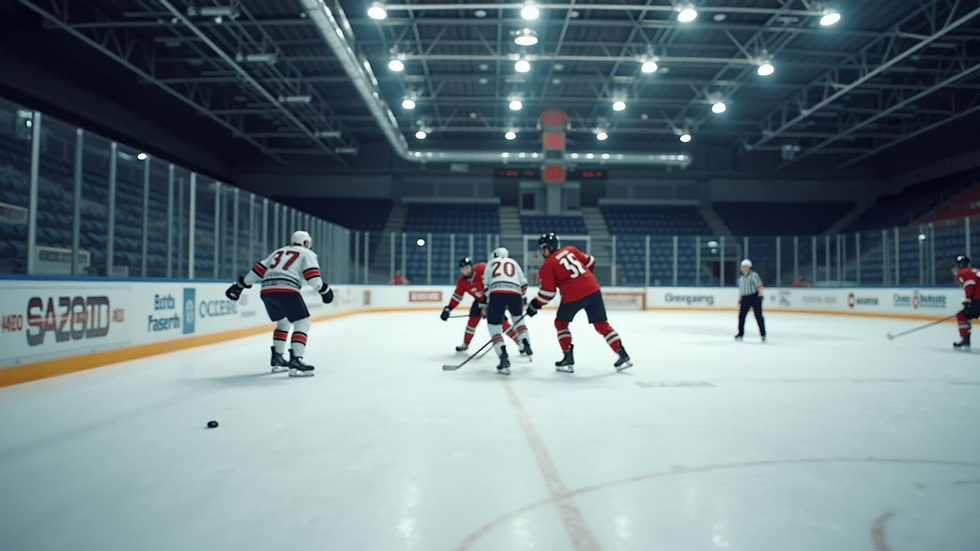Exploring the Link Between Mental Training and On-Ice Skills in Hockey
- Jim Dowd

- Aug 12
- 3 min read
Hockey is a game that requires both physical strength and sharp mental skills. As players rush across the ice, they face critical moments that demand quick decisions, intense focus, and effective pressure management. While physical training is essential, the role of mental training in enhancing on-ice skills is increasingly acknowledged. This post explores the ties between mental training and skill development in hockey, featuring insights from experienced player and coach Jim Dowd.
The Importance of Mental Training
Mental training includes various techniques designed to boost an athlete's focus and psychological strength. In hockey, where fast-paced action meets high-stakes situations, having a solid mental foundation is vital. Techniques like visualization, mindfulness, and goal setting play significant roles in improving player performance.
For example, a study by the International Journal of Sports Science & Coaching found that athletes who practiced mental training techniques improved their performance by as much as 24 percent. This statistic underscores the potential impact of mental strategies on game-day performance.
Visualization Techniques
One of the most powerful mental training methods is visualization. This involves mentally picturing successful skill execution. For hockey players, this could mean visualizing a clean shot on goal, a perfect pass, or a well-executed team play. Research shows that visualization can improve motor skills, which translates to better on-ice performance.
NHL players use visualization so can you. I encourages players to spend a few minutes before each practice and game visualizing their performance. By mentally rehearsing their actions, players can ease their anxiety and build confidence, leading to improved execution during actual gameplay.
Mindfulness and Focus
Mindfulness is an essential part of mental training. It encourages players to stay present and fully engaged in the moment, which can be challenging amidst distractions on the ice. Mindfulness techniques can enhance players' concentration, helping them stay focused when it matters most.
Practicing mindfulness also helps players manage their emotions during stressful moments. For instance, players who use mindfulness techniques report a 20 to 30 percent decrease in anxiety levels during games. This ability to stay calm can greatly affect performance outcomes when pressure peaks.
Goal Setting for Success
Goal setting is another crucial element of mental training. Establishing SMART (specific, measurable, achievable, relevant, time-bound) goals gives players a clear path for their development. By focusing on short-term and long-term goals, players can monitor their progress and maintain motivation.
I recommend that players set goals not only for game performance but also for practice sessions. For example, a forward might aim to successfully complete 50% of their passes in practice before the next game. This structured approach drives consistent improvement and sharpens focus.
The Role of Confidence
Confidence plays a central role in achieving success in hockey. Mental training can significantly enhance a player's self-esteem and belief in their abilities. Techniques like positive self-talk and affirmations are effective ways for players to build up their self-confidence.
Dowd highlights the value of celebrating small victories. When players acknowledge their progress, it reinforces their belief in their skills. This positive mindset helps players tackle challenges head-on, ultimately leading to better performances on the ice.
Integrating Mental Training into Practice
To maximize the benefits of mental training, it is essential to weave these techniques into regular practice routines. Coaches and players need to prioritize mental training alongside physical skill development for a holistic approach to growth.
I suggest integrating mental training exercises into warm-ups and cool-downs. For instance, before stepping onto the ice, players might visualize their game plan. Additionally, practicing mindfulness during breaks can help players reset and stay focused. Consistently incorporating mental training prepares players for real-game pressures.
The Impact on On-Ice Skills
The link between mental training and on-ice skill development is clear. Players engaged in mental training show enhanced decision-making, better focus, and increased resilience during pressure situations. These skills are crucial in hockey, where quick thinking and adaptability can determine a game's outcome.
Furthermore, mental training enhances teamwork and communication among players. Well-prepared athletes collaborate more effectively, leading to improved team performance. This synergy can be a decisive factor during competitive games.
Final Thoughts
The connection between mental training and skill development in hockey is significant. As demonstrated by NHL players, applying mental training techniques can lead to enhanced performance, boosted confidence, and improved resilience. By incorporating mental training into their routines, players unlock their full potential on the ice.
As hockey evolves, the recognition of mental training's value will likely continue to grow. By embracing this well-rounded approach, coaches and players can better prepare for the challenges they face. In the fast-moving world of hockey, a strong mental game can be just as important as physical abilities, making it a vital focus for all aspiring athletes.



